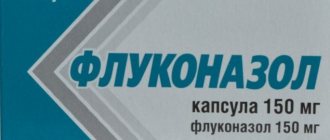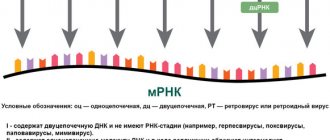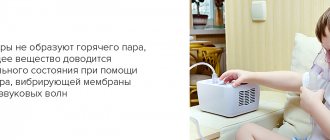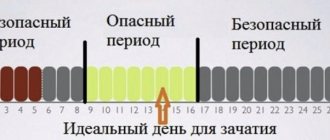Starting to notice white flakes on your hair? Then it’s time to choose an effective shampoo that can improve the functioning of the sebaceous glands, improve the regeneration of the skin, cleanse the dermis of the head from keratinized scales and, most importantly, overcome the unfortunate fungus. Looking for a product on the shelves of cosmetic stores or supermarkets? Let us immediately note that, alas, you will not find a potent drug there. But shampoos with ketoconazole, sold in pharmacies, are precisely those products that can quickly and easily get rid of dandruff.
Compound
- 1 Ketoconazole suppository contains 200 mg of ketoconazole . Additional substances: semi-synthetic glycerides (up to a total mass of the candle of 2000 mg), butylated hydroxyanisole.
- 1 g of Ketoconazole cream contains 200 mg of the drug substance of the same name, ketoconazole . Additional substances: labrafil M, emulsir 61, nipagin, vaseline oil, water.
- One tablet of the drug Ketoconazole contains 200 mg of ketoconazole . Additional substances: lactose, corn starch, magnesium stearate, silicon dioxide, low molecular weight PVP.
pharmachologic effect
Manufacturer: VERTEKS JSC (Russia)
Release form: tablets, capsules, suppositories, shampoo, cream for external use
Active ingredient: ketoconazole
Analogues: Terbinafine, Nizoral, Itraconazole
Ketoconazole is a synthetic drug directed against the action of a number of fungi. The active substance included in the drug changes the lipid composition of the fungal membrane, which leads to a disruption of the permeability of the wall in the cellular structure of the pathogen.
Release form
- Homogeneous white cream with a yellowish tint. 10, 15 or 25 grams of cream in an aluminum tube, one tube in a pack of paper.
- White, cylindrical vaginal suppositories with a yellowish tint; the presence of an air rod or a funnel-shaped depression is allowed on the cut. 5 candles in a contour package, 1 cell package in a paper pack.
- White round tablets with a yellowish tint, with a cross-shaped notch on one side. 10 tablets in a blister, 1 or 2 blisters in a paper pack.
Pharmacodynamics and pharmacokinetics
Pharmacodynamics
Ketoconazole is a man-made imidazole . Has fungistatic and fungicidal effects. It inhibits the biosynthesis of ergosterol and disrupts the normal lipid composition of the cell wall of fungi.
It acts on Epidermophyton floccosum, dermatophytes of the genera Microsporum, Trichophyton, as well as fungi of the genus Pityrosporum and Candida.
Pharmacokinetics of the cream
When applied locally, the active substance is practically not subject to systemic absorption; with prolonged use, its content in the blood is not determined.
Pharmacokinetics of suppositories
Absorption into the systemic circulation when administered intravaginally is extremely low.
Pharmacokinetics of tablets
The bioavailability of ketoconazole reaches its greatest values when consumed with food. If this condition is met, the maximum content of the drug in the blood is achieved after 1-2 hours. Absorption of the active substance is reduced in persons with reduced acidity of gastric juice and achlorhydria .
Reaction with blood proteins reaches 99%. Widely distributed in organs and tissues, except for the cerebrospinal fluid. Metabolized in the liver with the release of a large number of inactive derivatives. The main routes of biotransformation are: aromatic hydroxylation, cleavage and oxidation of piperazine and imidazole rings, oxidative O-dealkylation. The half-life is approximately 10 hours.
It is excreted mainly in bile and feces.
Shampoo options
There are such options for medicinal cosmetics that contain ketoconazole:
- Nizoral shampoo. This means, thanks to a well-promoted advertising campaign, is heard by everyone. It actually gets rid of yeast fungus, but it is not that cheap (700–1000 rubles), since it is imported from abroad. In addition to its high cost, this drug is contraindicated in pregnant women and nursing mothers.
- Shampoo Horsepower against dandruff with ketoconazole. This product is designed to overcome the unfortunate fungus, cleanse the scalp of various impurities and give hair health and shine. Due to the fact that the drug contains natural extracts, your curls acquire elasticity, beautiful tints and strength, like a horse's mane. Cost: 400–600 rubles.
- Keto-plus. In addition to ketoconazole, the developers added zinc to the anti-dandruff shampoo, which is designed to normalize the functioning of the sebaceous glands. Thus, the successful symbiosis of these strong components relieves itching, inflammation and quickly gets rid of dandruff. For a 60 ml bottle you will have to pay 490–560 rubles.
- Sebozol. It copes with the task no less effectively. A special feature of this drug is that it can be used during pregnancy and even for children under 1 year of age. A 100 ml bottle will cost you an average of 330 rubles.
- Mycozoral. This option for anti-dandruff shampoo will please the buyer with its affordable price. Due to ketoconazole, which is part of the shampoo, it eliminates fungus, and also, with regular use, helps normalize sebum. Prices for medicinal cosmetics start at 350 rubles.
- Ketoconazole Zn2+. Even from the name it becomes clear that this is a shampoo with ketoconazole and zinc. Cosmetics disrupt the synthesis of phospholipids, which, in turn, provide nutrition for the pityrosporum fungus and other microorganisms. This product will cost you 180 rubles (the volume of the bottle is 150 ml).
- Ketozoral-Darnitsa. A change occurs at the cellular level - the membrane is damaged and a lipid imbalance is achieved. The product not only has an antimycotic effect, but also eliminates the inflammatory process on the scalp, relieving redness and itching. The price of the drug in the Russian Federation is 70–90 rubles for a volume of 60 ml.
- Sulsen shampoo Forte from the domestic manufacturer Mirolla with the addition of ketoconazole. Combines ketoconazole and selenium disulfide. It has a double effect: it eliminates fungus and normalizes the functioning of the sebaceous glands. The cost of a bottle with a capacity of 150 ml is 210 rubles.
- Ketoconazole shampoo. The name itself speaks for itself. Cosmetics are produced in Russia. According to its principle, it acts like Nizoral, killing the fungus, but costs several times less. Contraindicated for pregnant, breastfeeding mothers and children under 2 years of age. The cost of the drug is 266 rubles.
The list in question is not complete. There are another 10–20 types of anti-dandruff shampoos with ketoconazole.
To treat dandruff, you should purchase ketoconazole shampoo containing 2% active substance , that is, for each gram of product - 0.02 grams of ketoconazole. For prevention purposes, a 1% suspension of the medicinal drug is used.
Indications for use
Indications for use of Ketoconazole cream
- athlete's foot inguinal ;
- dermatomycosis of smooth skin;
- athlete's foot and hands;
- pityriasis versicolor;
- candidiasis ;
- seborrheic dermatitis caused by Pityrosporum ovale.
Indications for the use of Ketoconazole suppositories
Treatment of vaginal recurrent candidiasis , both acute and chronic.
Prevention of the development of fungal infections of the vagina with reduced protective function of the body and during therapy with antibacterial agents and other drugs that alter the normal microflora.
Indications for the use of Ketoconazole tablets
Therapy and prevention of mycoses provoked by drug-sensitive microorganisms:
- infectious lesions of the mucous membranes of the digestive tract;
- severe lesions of the skin, nails and hair: onychomycosis , dermatophytosis , pityriasis versicolor and others;
- vaginal recurrent candidiasis of a chronic nature with ineffective local treatment;
- systemic mycoses: paracoccidioidomycosis , candidiasis , coccidioidomycosis , histoplasmosis , blastomycosis .
Prevention of fungal infections in weakened patients, including those suffering from immunodeficiency .
Effect of use
After just two weeks of regular use, you will notice that the amount of dandruff is significantly reduced (the achievement will be a reduction in the number of white flakes by half). Do not suspend therapy under any circumstances, because you must remove the keratinized particles of the epidermis to the end.
The course of treatment with ketoconazole-based drugs is 1–3 months, depending on the stage of advanced disease. According to most users, dandruff goes away after 4 weeks.
Some people find medicated shampoos addictive. At first, when using dermatological cosmetics, dandruff seems to decrease, but subsequently does not go away completely. The fungus simply gets used to the attack of the active ingredients.
If this situation occurs, stop use for several weeks and then resume use again.
In autumn or spring, changes may occur in the body that can affect the secretion of sebum and provoke the appearance of fungus. Buy 1% ketoconazole shampoo and alternate its use with washing your hair with the regular shampoo you usually use. Such preventive measures should be carried out for at least a month.
Negative user reviews include severe drying of the skin and hair itself. Many buyers, having familiarized themselves with the contents of the bottle, believe that medicinal shampoos should not contain lauryl sulfate, preservatives, fragrances, or dyes.
Contraindications
Contraindications to the use of cream
- hypersensitivity to the components of the drug;
- violation of the integrity of the skin in the areas where the cream is intended to be used.
Contraindications to the use of suppositories
- first trimester of pregnancy;
- hypersensitivity to the components of the drug;
- age less than 12 years.
Ketoconazole suppositories are used with caution during lactation, in the second and third trimesters of pregnancy and in children over 12 years of age.
Contraindications to the use of tablets
- liver diseases of an acute and chronic nature;
- pregnancy or lactation;
- age under 3 years;
- hypersensitivity to the components of the drug.
Concomitant use with the following drugs that are degraded by the CYP3A4 isoenzyme ; it is possible to increase the concentration of these drugs in the blood, leading to increased therapeutic and side effects and to prolongation of the QT segment and the development of arrhythmias :
- analgesics: Methadone , Levacetylmethadol ;
- antiarrhythmics: Dronedarone , Disopyramide , Dofetilide , Quinidine ;
- anthelmintic and antiprotozoal agents: Halofantrine ;
- antihistamines: Mizolastine , Astemizole , terfenadine ;
- drugs for the treatment of migraine: Ergometrine , ergotamine , dihydroergotamine , methylergometrine ;
- antitumor agents: Irinotecan ;
- calcium channel blockers: lercanidipine , felodipine , bepridil , nisoldipine ;
- antipsychotics and hypnotics, anxiolytics: Sertindole , Lurasidone , Pimozide , midazolam , Triazolam ;
- lipid-lowering drugs: Simvastatin , Lovastatin ;
- cardiovascular drugs: ranolazine , ivabradine ;
- immunosuppressants: Everolimus ;
- diuretics: Eplerenone ;
- gastrointestinal agents: Domperidone , cisapride ;
- other means: Colchicine in the treatment of patients with liver and kidney disorders.
Side effects
Side effects after using the cream
- Skin irritation, itching, burning at the site of application, and skin rash are possible, which disappear immediately after discontinuation of the cream.
Side effects after using suppositories
- Local reactions: vaginal itching, irritation of the vaginal mucous membranes.
- Allergic reactions: urticaria , skin rash.
Side effects after using the tablets
- Reactions from nervous activity: dizziness, drowsiness, paresthesia , headache, excitability, anxiety, insomnia , weakness, reversible increase in intracranial pressure.
- Metabolic reactions: anorexia , alcohol intolerance, increased appetite, hyperlipidemia .
- Digestive reactions: nausea, diarrhea , abdominal pain, dyspepsia , liver dysfunction, constipation , vomiting, dysgeusia , dry mouth, discoloration of the tongue, bloating, toxic hepatitis , jaundice, increased activity of liver enzymes, cholestatic hepatitis , cirrhosis liver , hepatonecrosis , liver failure .
- Reactions from the musculoskeletal system: pain in muscles and joints.
- Respiratory reactions: nosebleeds.
- Skin reactions: dermatitis , alopecia , erythema , itching, xeroderma , rash, hot flashes, acute exanthematous pustulosis of a generalized type , photosensitivity .
- Circulatory reactions: orthostatic hypotension .
- Reactions from the hormonal sphere: deficiency of adrenal function, gynecomastia testosterone levels in the blood is possible (this indicator returns to normal within 24 hours after administration).
- Reactions from laboratory data: decrease in the amount of thrombocytopenia .
- Sensory reactions: fear of sunlight.
- Reactions from the genital area: azoospermia , erectile dysfunction .
- Immune reactions: urticaria , rash , angioedema , anaphylactic shock , pseudoanaphylactic shock .
- General reactions: peripheral edema, fever , chills .
Instructions for use of Ketoconazole (Method and dosage)
Ketoconazole cream, instructions for use
In the treatment of dermatomycosis of the skin , athlete's foot (feet, hands and groin area), pityriasis versicolor and skin candidiasis , ketoconazole cream is applied to the affected and surrounding tissues once a day.
When treating seborrheic dermatitis, the ointment is applied to the desired area up to 2 times a day, depending on the severity of the disease. Maintenance therapy for this pathology is carried out up to two times a week. Treatment is continued for several more days after the symptoms of the disease have subsided or negative results of mycological examination of the skin have been recorded.
The duration of treatment is determined by the attending physician. The standard duration of treatment with cream for inguinal athlete's foot is 15-30 days, for dermatomycosis of the skin - 20-30 days, for pityriasis versicolor - 15-20 days, for athlete's foot and hands - 30-45 days, for seborrheic dermatitis - 15-30 days , for skin candidiasis – 15-20 days,
Instructions for candles
Suppositories are used intravaginally. Having freed the suppository from its packaging in advance, it is inserted into the vagina as deeply as possible in a horizontal position. Use one suppository per day for 3-5 days, depending on the severity of the disease.
When treating chronic candidiasis, treatment is carried out for 10 days while maintaining the specified frequency of administration.
Ketoconazole tablets, instructions for use
Ketoconazole tablets are taken orally with meals.
Children weighing more than 30 kg and adults are recommended to take 200 mg of medication once a day. The duration of treatment for lichen versicolor is 10 days, for candidiasis of the skin and oral cavity - 15-20 days, for onychomycosis - from 6 months to a year, for dermatomycosis - up to 30 days, for systemic mycoses - 30-60 days.
If significant positive changes in the course of the disease are not observed during the use of the drug (200 mg per day), then the daily dosage is allowed to be increased to 400 mg.
When treating vaginal candidiasis, the dosage is 400 mg per day, and the duration of administration is 5 days. To prevent fungal infections, adult patients are prescribed 400 mg of the drug per day.
Analogues of Ketoconazole suppositories
Ketoconazole or Livarol suppositories - which is better?
Manufacturer: NIZHFARM (Russia)
Release form: suppositories
Active ingredient: ketoconazole
Livarol suppositories will be better than Ketoconazole for the treatment of thrush, since the drug affects not only the cause of its occurrence, but also helps to normalize the body's microflora. Medicines have the same active substance and mechanism of action.
Livarol suppositories can be used during pregnancy and lactation.
Nystatin
Manufacturer: BIOSYNTHESIS PJSC (Russia)
Release form: rectal and vaginal suppositories
Active ingredient: nystatin
Nystatin suppositories are an effective remedy in the fight against Candida fungi. This analogue of Ketoconazole in suppositories delays and stops the growth of fungi. It is used not only for the treatment of candidiasis of internal organs, but also as a prophylaxis during local antimicrobial therapy.
Nystatin suppositories are prescribed 1 piece 2 times a day in the morning and evening in a course lasting 10–14 days.
Overdose
Overdose when using cream or suppositories
Since these forms of drug release do not reach the systemic bloodstream, signs of overdose are unlikely.
If cream or suppositories are swallowed, the stomach should be lavaged and symptomatic treatment should be started.
Overdose of pills
In case of an overdose of tablets, increased side effects are expected. Treatment of overdose: gastric lavage, symptomatic therapy.
Interaction
When used according to the instructions, Ketoconazole suppositories and cream (ointment) are almost not absorbed into the systemic circulation and interaction with other drugs is unlikely.
When Ketoconazole is used together with antacids (H2-histamine receptor blockers, aluminum hydroxide , proton pump inhibitors), the absorption of the former from the intestine is reduced. With these combinations, it is necessary to monitor the effectiveness of treatment with the drug and, if necessary, adjust its doses.
When Ketoconazole is used together with strong activators of the CYP3A4 isoenzyme ( Rifabutin , Isoniazid , Efavirenz , Rifampicin , phenytoin , Carbamazepine , Nevirapine ), a decrease in the bioavailability of the former is possible, which can result in a significant decrease in its effectiveness. If these combinations cannot be avoided, then it is necessary to monitor the effectiveness of the drug described and, if necessary, increase its dose.
When ketoconazole is used together with substances that suppress the CYP3A4 isoenzyme (antiviral and other drugs), the bioavailability of ketoconazole may increase. With these combinations, it is necessary to monitor the patient’s condition in order to identify signs of increased effect of Ketoconazole and, if necessary, reduce its dose.
When used simultaneously, Ketoconazole tablets can block CYP3A4-mediated drug transformation, as well as P-glycoprotein -mediated transport of substances. This leads to an increase in the concentrations of these drugs in the blood, which in turn causes an increase in their therapeutic or side effects.
Concomitant use of the following drugs with Ketoconazole is not recommended: Fentanyl , Tamsulosin , Rifabutin , Carbamazepine , rivaroxaban , Dasatinib , Trabectedin , Nilotinib , Salmeterol.
Ketoconazole tablets should be used with caution with the following drugs: buprenorphine , Alfentanil , Oxycodone , coumarins, Saxagliptin , Cilostazol , Digoxin , Repaglinide , Eletriptan , praziquantel , Ebastine , docetaxel , bortezomib , Imatinib , Busulfan , Ixabepilone , Erlotinib , Trimetrex at , Alprazolam , Lapatinib , vinca alkaloids, Buspirone , Aripiprazole , midazolam , Brotizolam , Haloperidol , Perospirone , Ramelterone , Quetiapine , Risperidone , indinavir , Maraviroc , Nadolol , Saquinavir , Aliskiren , Verapamil , Budesonide , Aprepitant , Cyclosporine , Ciclesonide , Dexamet azone , methylprednisolone , fluticasone , Tacrolimus , Sirolimus , Atorvastatin , Temsirolimus , Reboxetine , Imidafenacin , Fesoterodine , Solifenacin , Mozavaptan , Sildenafil , Tadalfil , Tolterodine , Cinacalcet , Alitretinoin , Tolvaptan .
What is ketoconazole shampoo?
It has long been known that dandruff appears on the dermis of the scalp due to improper functioning of the sebaceous glands. When too much or, conversely, too little sebum is secreted, the microorganisms that live on the skin of the hair begin to become active and multiply, creating entire colonies. It is the waste products of the fungus that appear on our hair in the form of dandruff.
So which remedy should you choose? Antifungal anti-dandruff shampoo with ketoconazole will help in this matter.
Indications for use:
- dandruff;
- seborrheic dermatitis, in particular atopic;
- pityriasis versicolor;
- psoriasis;
- other dermatological ailments.
It is important to know! If you use a drug purchased at the pharmacy for a long time, and the result still does not come, the only right decision for you will be to go to a dermatologist.
The fact is that the cause of dandruff may be associated with hormonal imbalance, metabolism, sudden climate change or constant stressful situations. Only by eliminating these factors can you successfully overcome the disease and improve the condition of your curls.
Composition and strength
Ketoconazole is an antimycotic substance synthesized by the chemical industry. It acts superficially, since it is applied to areas affected by the parasite.
Its active formula is designed to destroy the components that are involved in the formation of the walls of the fungus. Thus, the microorganism no longer grows and dies after some time.
Climbazole is considered to be an analogue of ketoconazole. As a rule, it is prescribed by dermatologists in case of allergic reactions to ketoconazole. Climbazole-based products also kill fungus and prevent microorganisms from multiplying.
So which is better: climbazole or ketoconazole? A dermatologist can determine this by conducting a number of studies.
Since climbazole and ketoconazole are quite aggressive, so as not to harm your skin, they should not be used more than once every 3 days. In addition, doctors do not recommend using shampoos for children under 12 years of age.
Also, the composition of medicinal cosmetics may include:
- selenium disulfide, which has an antimycotic effect, normalizes sebum secretion and slows down cell division;
- zinc pyrithione, which provides light peeling, relieves inflammation and kills fungus;
- tar, which has an exfoliating effect;
- ciclopirox, which promotes better penetration of the drug’s components into the layers of the epidermis.
Interesting to know! In 1998, scientists conducted an interesting experiment. Its participants washed their hair with ketoconazole-based shampoo. It turned out that they not only had less dandruff, but also minimized sebum production by 18%.
Advantages and disadvantages
In fact, using shampoo that locally kills the fungus is much easier than taking medications orally.
The treatment procedure is practically no different from washing your hair, and besides, shampoo only acts on the scalp, while tablets can cause a strong blow to your liver and stomach.
Other benefits:
- ketoconazole shampoo foams well, so it is used very sparingly;
- effectively fights dandruff - in 1–2 months the white scales will leave your hair;
- suitable for different types of scalp, both oily and dry;
- it is relatively inexpensive, especially if you purchase domestic products.
Among the disadvantages are:
- too many chemicals that can have a detrimental effect on the hair structure (although many manufacturers try to introduce oils, herbal extracts, citric acid and other additives of natural origin into their medicinal cosmetics);
- not suitable for everyone (the skin can get used to it, and cases of allergic reactions are not uncommon);
- Not a very pleasant smell, so to speak, not for everyone.
Try to purchase multi-vector shampoos. They should fight fungus, normalize sebum production by the sebaceous glands and improve hair condition. One of these products is Horsepower shampoo with ketoconazole and Mirrolla sulsen shampoo.
Contraindications
As contraindications on the packaging, the manufacturer, as a rule, notes individual intolerance to individual components . To find out if you have an allergic reaction to one or another component of the product, do a completely easy and quick test.
Drop a few grams of the product onto the inside of your elbow. Massage a little and leave to activate for 10-15 minutes. If nothing happens to the dermis (redness, hives, swelling, itching), then you can safely use cosmetics for treatment.
Be careful when choosing ketoconazole-based products. Always read the instructions carefully. The fact is that the active component can penetrate into the blood, albeit in small quantities.
Therefore, pregnant and breastfeeding mothers should avoid use. It is also not recommended to use the suspension for washing hair for people with severe kidney and liver diseases.
The following side effects are possible:
- burning and itching;
- rash;
- redness of the application site;
- eczema;
- increased dryness or, conversely, excessive oiliness of hair;
- change in hair color (especially for gray hair or permed hair).
Important point! The development of symptoms of a shampoo overdose is unlikely, although some of it still gets into the blood. That is why washing your hair three times (maximum 2 times) is not allowed in one approach. Do not use shampoos every day, only if a dermatologist has determined the development of pityriasis versicolor.
In case of contact with the mucous membranes of the eyes, rinse them immediately with water. If the suspension somehow penetrates the stomach, it is better not to risk it, but immediately induce vomiting and take the absorbent.
special instructions
The cream is not intended for use in ophthalmic practice; it is also recommended to avoid contact with the eyes.
When using the cream immediately after long-term use of external glucocorticosteroids, skin irritation is possible, to relieve which it is recommended to continue treatment with local glucocorticosteroids in the morning and apply ketoconazole cream in the evening. Over the next 3 weeks, it is necessary to reduce the dose of the corticosteroid until it is completely discontinued.
For fungal infections of the scalp, it may be more preferable to use shampoo with Ketoconazole.
In very rare cases, when using suppositories, it is possible to develop a local allergy of the external genitalia in a partner.
To reduce the risk of relapse of the disease when using suppositories, it is recommended to simultaneously carry out therapy with a sexual partner.
The use of suppositories can reduce the reliability of barrier contraception.
The use of tablet forms of the drug is not advisable in the treatment of fungal meningitis , because ketoconazole does not pass through the blood-brain barrier poorly.
Due to the high risk of developing hepatotoxicity, the drug tablets should be used only in special cases when indicated and prescribed by a doctor.
Before starting tablet therapy, it is necessary to assess the level of liver function in order to exclude diseases, and during therapy it is necessary to regularly monitor blood counts, the condition of the kidneys, adrenal glands and liver, so as not to miss the appearance of signs of hepatotoxicity.
If glucocorticosteroids were used to treat skin diseases, then Ketoconazole tablets are prescribed only 14 days after their complete withdrawal.
Consuming acidic drinks increases the absorption of ketoconazole.
The drug Ketoconazole does not affect the ability to drive vehicles.
Ketoconazole shampoo analogues
Sulsena
Manufacturer: Mirrola (Russia)
Release form: shampoo
Active ingredient: selenium disulfide
Sulsen shampoo is used as a therapeutic and prophylactic agent to combat dandruff caused by the active proliferation of fungus on the scalp. The effect of the shampoo is manifested in the form of:
- normalization of the secretory function of the sebaceous glands;
- suppression of fungal growth;
- reducing the ability of epidermal cells to exfoliate.
Treatment of the scalp occurs by applying shampoo to damp hair, followed by rubbing the product into the scalp for 3–5 minutes. After treatment, the hair is washed with warm water.
Ketoconazole analogs
Level 4 ATX code matches:
Gainomax
Sertaconazole
Ornisis
Metrogil Plus
Livarol
Flagyl
Ginofort
Zalain
Candide B6
Candide
Gyno-Travogen Ovulum
Kanizon
Metromicon-Neo
Lomexin
Klion-D 100
Neo-Penotran
Gyno-Pevaril
Ginesol
Antifungol
- Dermazol
- Mycozoral
- Mikoket
- Mikanisal
- Nizoral
- Livarol
- Oronazole
- Dandruff
- Fungavis
- Sebozol
- Funginok
- Fungistab
Reviews about Ketoconazole
Reviews of ointments (creams) and suppositories with ketoconazole characterize them on the positive side. There are rare cases of side effects when using them. Reviews of shampoo with ketoconazole characterize it even better in the treatment of fungal infections of the scalp.
Tablets of the same name are prescribed extremely rarely due to their high ability to provoke side effects, so it is impossible to get a complete picture of the effectiveness of this form of release of the drug based on reviews.
Ketoconazole or Climbazole – which is better?
Both medications are active against various strains of the fungus. Climbazole is a new generation ingredient that is used in shampoos and creams for fungal infections. Climbazole is the best drug for relieving pathological symptoms.
The analogue has fewer side effects compared to Clotrimazole, a smaller molecular structure and rapid penetration into the affected tissues. The result of the action of the analogue is the elimination of itching, increased greasiness of the hair and flaking of the scalp.
Treatment of fungal infections and the prescription of appropriate medications should only be done on the recommendation of a doctor and after determining the type of fungus. A properly prescribed course of therapy with basic medication or its analogues will allow you to quickly cope with the infection, relieve negative symptoms and discomfort.
Ketoconazole price, where to buy
The price of Ketoconazole ointment 15 g in Russia is about 50 rubles. In Ukraine, cream in such packaging can be bought for an average of 30 hryvnia.
The price of Ketoconazole suppositories in standard packaging in Russia averages about 400 rubles, in Ukraine their average price is about 100 hryvnia.
The price of Ketoconazole tablets No. 10 in Russia is about 150 rubles.
- Online pharmacies in RussiaRussia
- Online pharmacies in UkraineUkraine
ZdravCity
- Ketoconazole suppositories vaginal.
400 mg 5 pcs. LLC Avexima Siberia 272 rub. order - Ketoconazole suppositories vaginal. 400 mg 10 pcs. Avexima LLC Avexima Siberia
RUR 451 order
- Ketoconazole sup. vag. 0.4g 5pcs YuzhPharm LLC
RUB 218 order
Pharmacy Dialogue
- Ketoconazole (supp. vag. 400 mg No. 10) Avexima Siberia LLC
RUB 493 order
show more
Pharmacy24
- Ketoconazole Fitofarm 25 g cream PRAT "Fitofarm", Ukraine
38 UAH. order - Ketoconazole 2% 15 g cream PRAT "Fitofarm", Ukraine
23 UAH order










